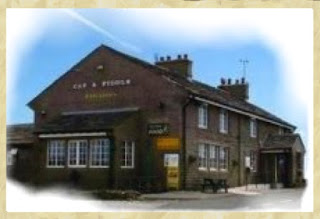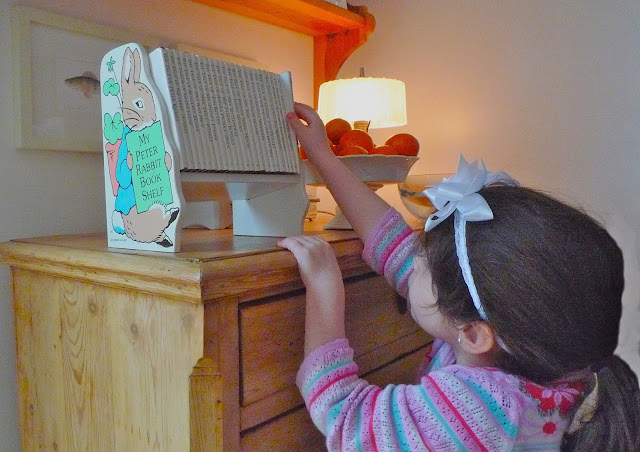 |
| Carol, Peak District National Park, England Photo Jim W. 1975 |
While internet surfing the other day I found a story about the village of Bonsall, one of the UFO centers of Britain. Wow! I’ve been to Bonsall, in its pre-UFO days. Memories of that visit flood back...
My all time favorite car was an orange 1970 Volkswagen station wagon we owned in England, dubbed the Orange Freeze, after my favorite Steak & Shake milkshake. It had the most tactile knobs of almost cartoon proportions. For the most part it was a steadfast car for motoring about England in Germanic simplicity.
The Orange Freeze’s only breakdown was a memorable one. We were returning from visiting Jim’s sister in Leicester, to our home near Stockport, south of Manchester in 1975.
 |
| Peak District (Derbyshire) National Park |
 |
| Cat and Fiddle, altitude 1690 ft. photo: Wiki |
The pub was still open. Jim called emergency road service. About half an hour after he got back to the car we spotted a small van’s lights weaving toward us from the east on the A537. Our mechanic.
For the next two hours Lewis Hart and Jim tried to start O.F. while Anna and I sat in his van, snuggling up for shared body warmth. The fuel pump was busted. Lewis drove us home to Cheadle Hulme, arriving at dawn (about 4:15 in June). We invited him in for tea. We had cups of piping hot milky tea, bacon, eggs and big slabs of toast peppered with jolly stories about Lewis’ life on the moors. Drawing a map before he left, we agreed to collect the O.F. on Wednesday after work. Then Jim left for work. At 8 a.m. his mum called relieved we’d not sailed off a cliff. She was up half the night worrying when we didn’t answer the phone, after seeing the weather report on the news.
Jim couldn’t get off work early Wednesday so I asked a friend and her husband Neil to take a picturesque afternoon drive to Derbyshire now that the forecast was sun, sun, sun. We left Cheadle Hulme about 3 p.m., passing the outer Manchester suburbs, then the edge of the Cheshire Plain before rising to the more rugged Peaks.
 |
| Bonsall, Derbyshire photo: Wiki |
Turning onto narrower and narrower roads we were in different country -- where if we asked for directions the dialect would be as difficult to translate as Urdu. We slowed for a herd of milk cows then later became deluged by a flock of newly shorn sheep. The road climbed and wound, dry stone walls the primary landscape feature. As my enchantment grew Neil’s lessened. He’d agreed to make a straight zip to point B and I’d dragged him back to the 18th century.
We leaped out of Neil’s car to the welcome of Lewis’ wife Edwina’s kitchen garden riches. I bought us fresh eggs, salad greens, clotted cream. After settling up with Lewis he invited us to share tea and fresh scones. I began to burble a delighted yes when Neil said, in a tone that was either class consciousness or rural fatigue, “Impossible. Carol’s following us home in case there’s another breakdown.” Ugh. Caught between two accidentally generous souls, world’s apart.
We never saw Lewis, Edwina or Bonsall again. By week’s end Jim left for a scientific meeting in Italy and Anna and I flew to St. Louis, our first visit home in over three years. When we returned Jim accepted a position in Grand Forks, North Dakota. We forgot our Derbyshire adventure in the moving flurry.
Had this happened in 2009 we’d have exchanged email and website addresses but not then. Then we were ships passing in the night. The internet changes that. Knowing where to look you can tease back the onion skin layers of the past. In our case the Orange Freeze’s Derbyshire Caper.
 |
| Derbyshire 1975 photo: Carol |
Right before our return to the USA we sold the Orange Freeze to a prosperous looking couple needing a second car for the wife. They arrived in their Rover on a rainy Saturday afternoon. We exchanged paperwork, a check then keys. Cautioning them about our tricky driveway I offered to back O.F. out but the husband said no problem. He proceeded to accidentally ram the passenger side door into the fence post, denting our poor Orange Freeze. O.F. no doubt started missing us too.
*Parts of northern England also had a taste of winter yesterday. ... The most significant June snowfall in memory came on June 2, 1975, when sleet and ... More famously, the match between Derbyshire and Lancashire at Buxton was called off. .... After rain, sleet, snow, ice and even a full moon




